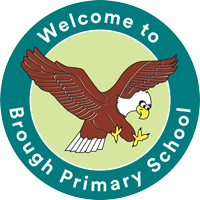At Brough Primary School we make provision for children with Special Educational Needs and/or Disability within each of the four categories defined in the 2015 SEND Code of Practice (para 6.28 – 6.35):
• Communication and Interaction
• Cognition and Learning
• Social, Emotional and Mental Health
• Sensory and/or Physical
It is not uncommon that children may have SEND that falls into one or more of the above categories.
Sensory and / or Physical needs
Some children and young people require special educational provision because they have a disability which prevents or hinders them from making use of the educational facilities generally provided. These difficulties can be age related and may fluctuate over time. Children may have a visual or hearing impairment or have a physical need for which they require additional ongoing support and equipment to ensure that lessons and learning opportunities are accessible.
How does Brough Primary School support children with Sensory and/or Physical needs?
Children with Physical Needs are supported through liaison with our Sensory and Physical Teaching Service Team (SaPTS). Care Plans are implemented and additional resources such as laptops, footrests, writing slopes etc. are put in to place to enable pupils to access the quality first teaching within the classroom.
There are children in the school who require an individualised program of work which develops fine motor and handwriting skills. The school uses programs to develop handwriting for specific children. Such as: Write from the Start, Speed Up and Pegs to Paper. Children will also have the opportunity to work on keyboard skills using the BBC Dance Mat program.
At Brough Primary School we have a sensory room and quiet rooms which can be used by all children to develop a variety of skills, but which ultimately enriches the provision for children with sensory impairment such as Autism, ADHD, and EBD.
The rooms have a variety of uses and benefits for all children. They provide relaxation activities, visual, tactile and auditory stimulation through the use of a bubble tubes/ projectors. Language development, anger management, speech therapy, hand/eye co-ordination and gross/fine motor skills can all be developed using the room.
We collaborate closely with our attached Educational Psychologist and other agencies to identify and support children’s learning.
Please refer to out SEN Information report for more information.
Useful websites:
For an introduction to Sensory Circuits: https://www.youtube.com/watch?v=4EpBSD3dJnM
Visual: https://www.nhs.uk/conditions/visionloss/
Hearing Loss: https://www.nhs.uk/conditions/hearingloss/



